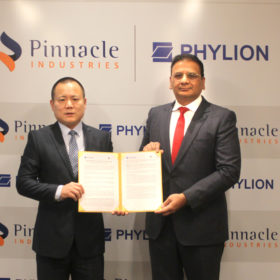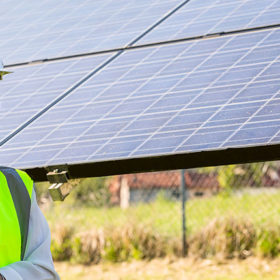Loom Solar wins the ‘Fastest Growing SMB of the Year’ award at Amazon SMBhav 2020
The monocrystalline solar panel manufacturer aims to reach 100 million customers and achieve Rs 100 crore revenue by FY 2020-21.
Pinnacle and China’s Phylion launch lithium-ion battery assembly unit in Maharashtra
Madhya Pradesh based Pinnacle Industries–a commercial vehicle components manufacturer–plans to roll out electric vehicle battery packs with Phylion cells and semi-knocked-down kits.
Loom Solar launches IoT based AC modules
The emerging startup has become the second Indian module manufacturer to launch AC panels integrated with Enphase microinverters, after Waaree announced its partnership with Enphase in 2007.
Proposals invited for joint Indo-Hungary research in renewable energy
Multidisciplinary research teams and linkages to industrial partners are highly encouraged. Project duration is 36 months. The deadline for submitting the applications is March 11, 2020.
TERI develops blockchain-enabled prototype for solar power trading
The platform will help to promote the adoption of rooftop solar PV systems, particularly in the residential consumer segment, as it will incentivize consumers for trading among themselves, in addition to selling to the distribution utility—according to the sustainability thinktank which has also come out with innovative use cases of blockchain for electric vehicles and distributed battery storage.
AEPPL to invest Rs37.15 billion in second phase of lithium battery plant
The joint venture between Japanese majors Toshiba, Denso and Suzuki will make the investment in the Gujarat plant over the 2021-25 period, having pumped Rs12.5 billion into the first phase of development.
Renewable energy MoU with Saudi Arabia gets cabinet nod
Project development and value chain localization are the focus areas for cooperation between the two countries.
UK University to help design EV batteries for Indian climate
The university researchers will provide expertise in the operation and management of lithium-ion batteries, environmental test facilities for battery modules and advanced battery analysis techniques.
Azure Power raises $75 million from Canadian investor CDPQ
The investment raises CDPQ’s equity interest in Azure Power to 49.4% from 41.4%. The proceeds will be used by the developer to fund its current projects.
“Our LFP battery technology is ideal for the Indian market”: SimpliPhi Power CEO
California-based SimpliPhi Power, which designs and manufactures lithium ferro phosphate (LFP) energy storage systems, has brought off-grid power to everything from the giant moon on Conan O’Brien’s talk show set to U.S. troops in Afghanistan and Iraq, to rooftops for Whole Foods and Airbnb. As the company prepares to enter into India, CEO and President Catherine Von Burg tells pv magazine why their LFP technology is best suited for India and their plans for the country.















